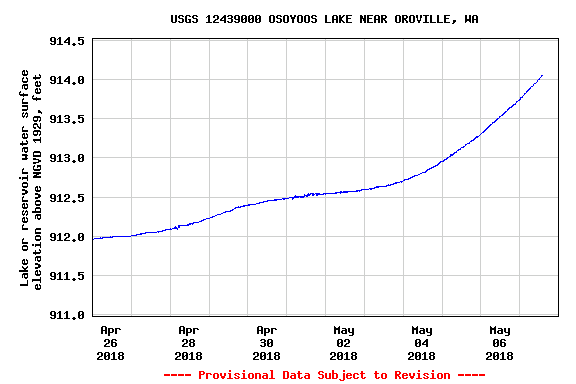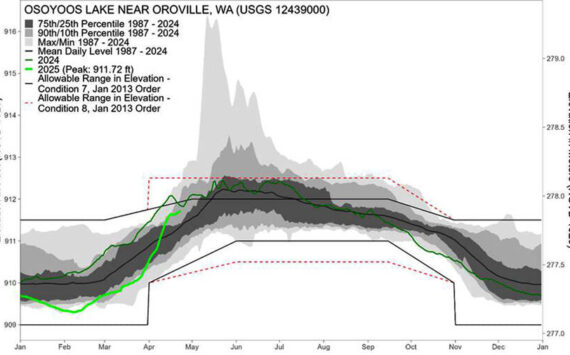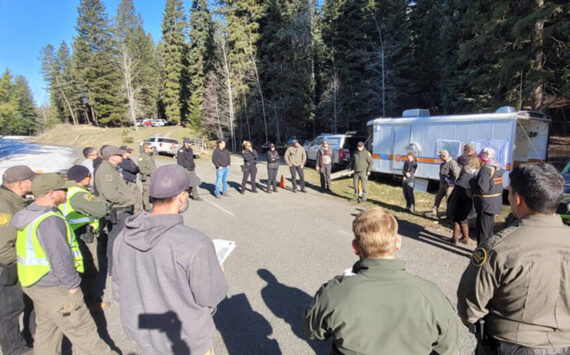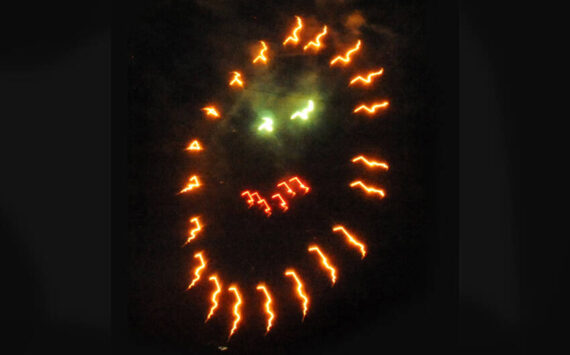
OROVILLE – The Lake Osoyoos Association (LOA) has issued an alert about lake levels rising, as well as flooding in the Okanogan and Similkameen rivers.
“Another spring of record snowfall, a 140 percent of normal in a lot of areas around our watershed. The Okanogan River flood stage near Tonasket is 15 feet. As of tonight May 6, the rivers is at 16.15. It is possible, projected by many agencies, that by May 11 the flood stage could go to 19.43. The highest in 44 years,” writes Ford Waterstrat with the LOA.
Last year the Similkameen at Nighthawk got to 19,500 cfs (cubic feet per second) on May 24. At that point the water was near the top of the weir at Zosel Dam. This year the Similkameen is forecast to be at 23,500 cfs by this Friday, May 11.
“This could have significant impact on Lake Osoyoos. Be ready to protect your property. The lake level will be higher this year than last year. If you are thinking about going out and about on your boat it is better not to as your wake could cause damage to someone’s property or foundation,” writes Waterstrat, adding, “As a boater you are responsible for any damage your wake does. Our neighbors to the North of the Border are telling their lakeshore owners that they should not wait but be proactive now. Good advice for us.”
Here are some general rules of thumb for sandbagging:
- Sand is best, but you can fill sandbags with available dirt.
- Sandbags should be filled no more than 2/3 full, and should be dropped into position. That allows the sand or dirt to shift so that the bag can seal against adjacent sandbags. If the bag is too full, it doesn’t work well.
- One layer of sandbags protects to a height of no more than six inches, so a wall of sandbags two high that is properly laid will protect no more than one foot in height.
- A single sandbag, filled 2/3 full, will be approximately one foot from end to end.
To protect an area 25 feet long to a depth of one foot, you would need approximately 50 to 75 sandbags. Sandbagging does require some skill. To learn more, look at a pamphlet found here: http://www.nws.usace.army.mil/Portals/27/docs/emergency/NWD_Sandbag_Pamphlet.pdf.






